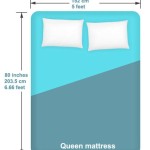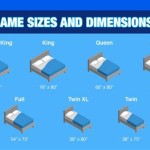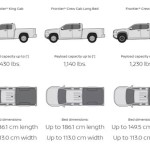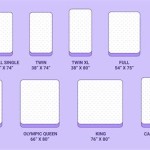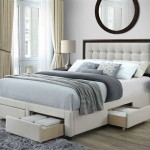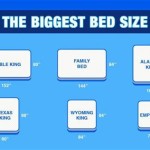Size Of Beds In Us
The size of beds in the US has grown significantly over the years. In the early 1900s, the average bed was about 4 feet wide and 6 feet long. Today, the average bed is about 5 feet wide and 7 feet long. There are a number of factors that have contributed to this increase in size, including the increasing average height of Americans, the availability of more space in homes, and the popularity of larger mattresses.
The increasing average height of Americans is one of the most significant factors that has contributed to the increase in bed size. In the early 1900s, the average American male was about 5 feet 8 inches tall. Today, the average American male is about 5 feet 10 inches tall. This increase in height has made it necessary for beds to be larger in order to accommodate taller people.
The availability of more space in homes is another factor that has contributed to the increase in bed size. In the early 1900s, most homes were relatively small. As a result, beds had to be smaller in order to fit in the available space. Today, homes are typically larger, which gives people more room to choose larger beds.
The popularity of larger mattresses is another factor that has contributed to the increase in bed size. In the early 1900s, most mattresses were made of straw or feathers. These mattresses were relatively thin and uncomfortable. Today, most mattresses are made of foam or latex. These mattresses are thicker and more comfortable, which makes them more appealing to consumers.
The increase in bed size has had a number of positive and negative consequences. One positive consequence is that larger beds are more comfortable. This is especially important for people who are tall or who have back problems. Another positive consequence is that larger beds can accommodate more people. This is ideal for families with young children or for couples who like to sleep in the same bed with their pets.
One negative consequence of the increase in bed size is that it can make it more difficult to find bedding. Sheets, blankets, and comforters that fit a smaller bed may not fit a larger bed. This can be a problem for people who are on a budget or who have difficulty finding bedding in their desired size.
Another negative consequence of the increase in bed size is that it can take up more space in a room. This can be a problem for people who live in small apartments or homes. It can also be a problem for people who have a lot of other furniture in their bedroom.
Overall, the increase in bed size in the US has had both positive and negative consequences. It is important to weigh the pros and cons of a larger bed before you make a decision about what size bed to buy.
Standard Bed Sizes in US
There are a number of standard bed sizes in the US. The most common size is a queen-size bed, which is 60 inches wide and 80 inches long. Other common sizes include twin-size beds, which are 39 inches wide and 75 inches long, full-size beds, which are 54 inches wide and 75 inches long, and king-size beds, which are 76 inches wide and 80 inches long.
In addition to these standard sizes, there are also a number of specialty bed sizes available. These sizes include California king-size beds, which are 72 inches wide and 84 inches long, and Olympic queen-size beds, which are 66 inches wide and 80 inches long.
When choosing a bed size, it is important to consider the size of the room where the bed will be placed, the number of people who will be sleeping in the bed, and the desired level of comfort.
How to Choose the Right Bed Size
Choosing the right bed size is important for getting a good night's sleep. Here are a few tips to help you choose the right size bed for your needs:
- Measure the room where the bed will be placed. This will help you determine the maximum size bed that you can fit in the room.
- Consider the number of people who will be sleeping in the bed. If you will be sharing the bed with a partner, you will need a bed that is at least 60 inches wide. If you have children or pets that sleep in the bed with you, you may need a bed that is even larger.
- Think about your desired level of comfort. If you like to spread out when you sleep, you will need a bed that is at least 75 inches long. If you prefer a more cozy bed, you may be able to get away with a bed that is shorter.
Choosing the right bed size is a personal decision. There is no right or wrong answer. The best way to choose a bed size is to consider your own needs and preferences.

Mattress Sizes Chart And Bed Dimensions Guide Amerisleep

Comprehensive Guide To Bed Sizes And Dimensions

Most Common Mattress Size Everest Linens

Mattress Sizes 101 Finding Your Perfect Fit

Bed Sizes And Mattress Chart Us Uk Australia

Full Size Bed 2025 In Cm

Number Hospital Beds United States By Size 2024 Statista

An Alaskan King Bed Giant Mattress Sizes 2024 Guide

How Do Bed Sizes In Australia Compare To Europe I Am Relocating Perth Need New Linen Journee Relocation Specialists
Beds Bed Frames For Original Co Us

